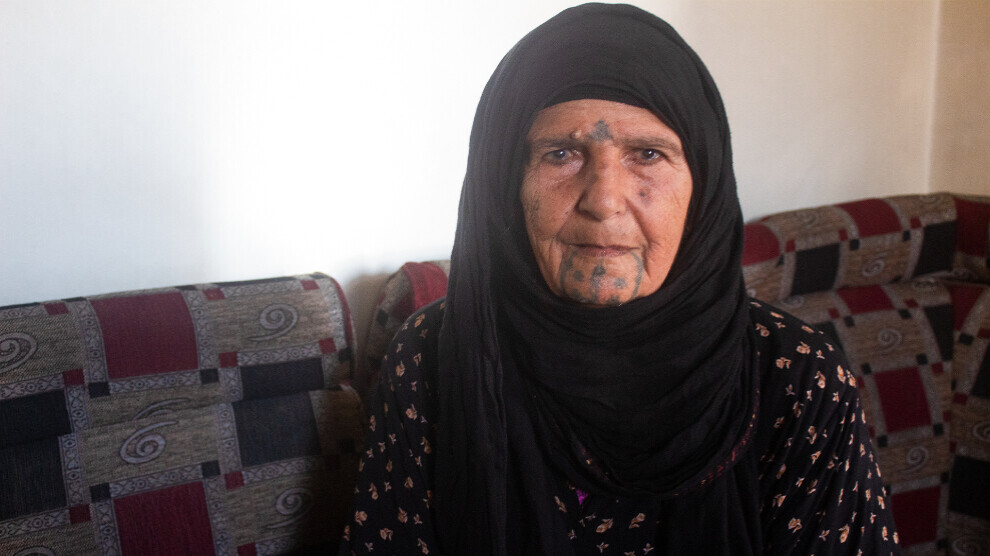Old woman passes traditional Kurdish ‘Deq’ tattoo down to next generations
80-year-old Dallah Assaf, who got Deq (Kurdish tattoos) on her face and hands when she was young, says the tradition of deq differs from region to region.

YUSRA AL-EHMED
Raqqa- Having a thousand-year-old history, the tradition of Deq (Kurdish tattoos) have been still practiced by women. 80-year-old Dallah Assaf, who lives in the city of Raqqa, North and East Syria, has many deq (tattoos) on her face and hands. Her aunt inked the tattoos on her face and hands when she was very young. “I asked my aunt to draw deq (s) on my face and hands after I saw how young women got tattoos on their bodies,” said Dallah Assaf.
‘The ink is made from breast milk and lampblack’
Dallah Assaf told us that women use three needles to practice deq. “The ink is made from breast milk and lampblack. We mix them and then draw designs on the skin by using needles. Drawing a deq differs according to designs.” She also told us that young women prefer to get deq on their feet more, adding:
“The designs of deq differ from region to region according to customs and traditions. Some want to get deq (s) on their hands, some on their feet. Professional deq artists are more experienced in using small and thin needles. We, as women, teach girls how to practice this tradition so that we pass this tradition down to the next generations.”
